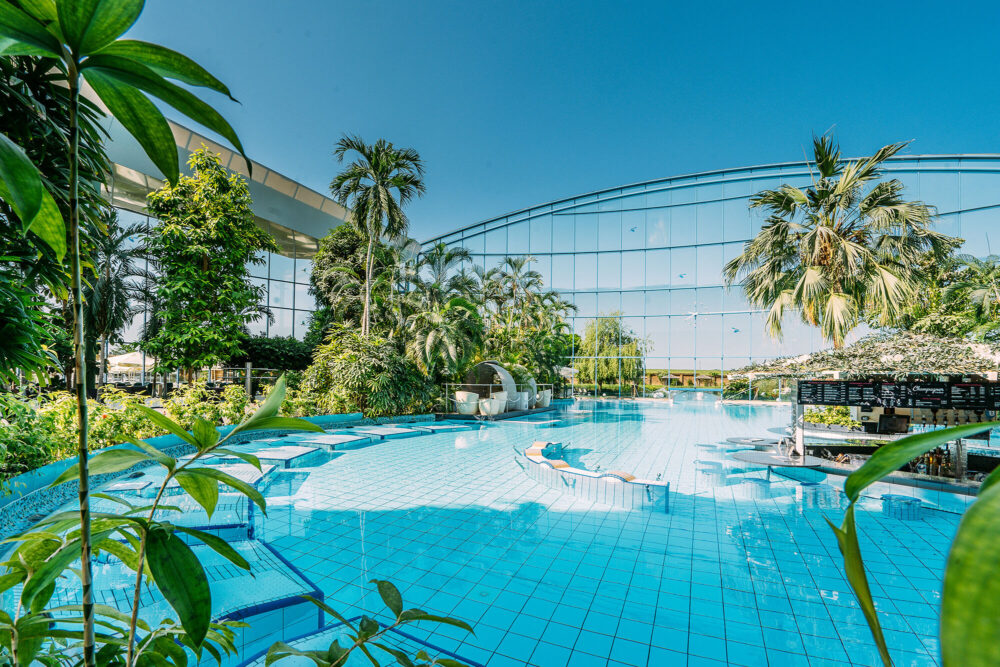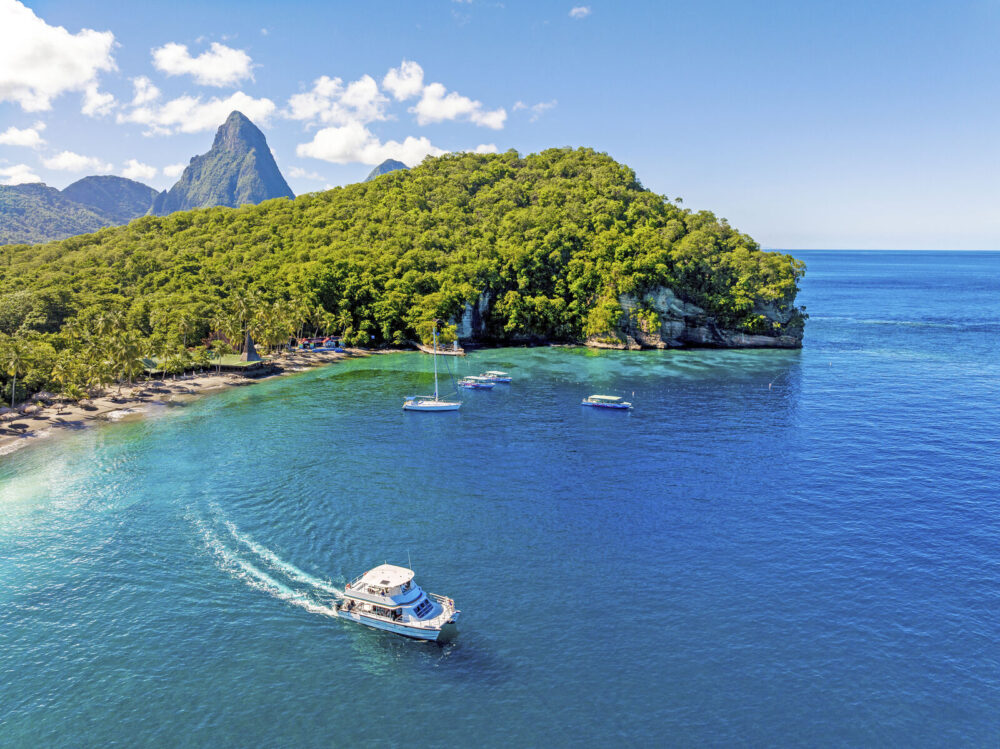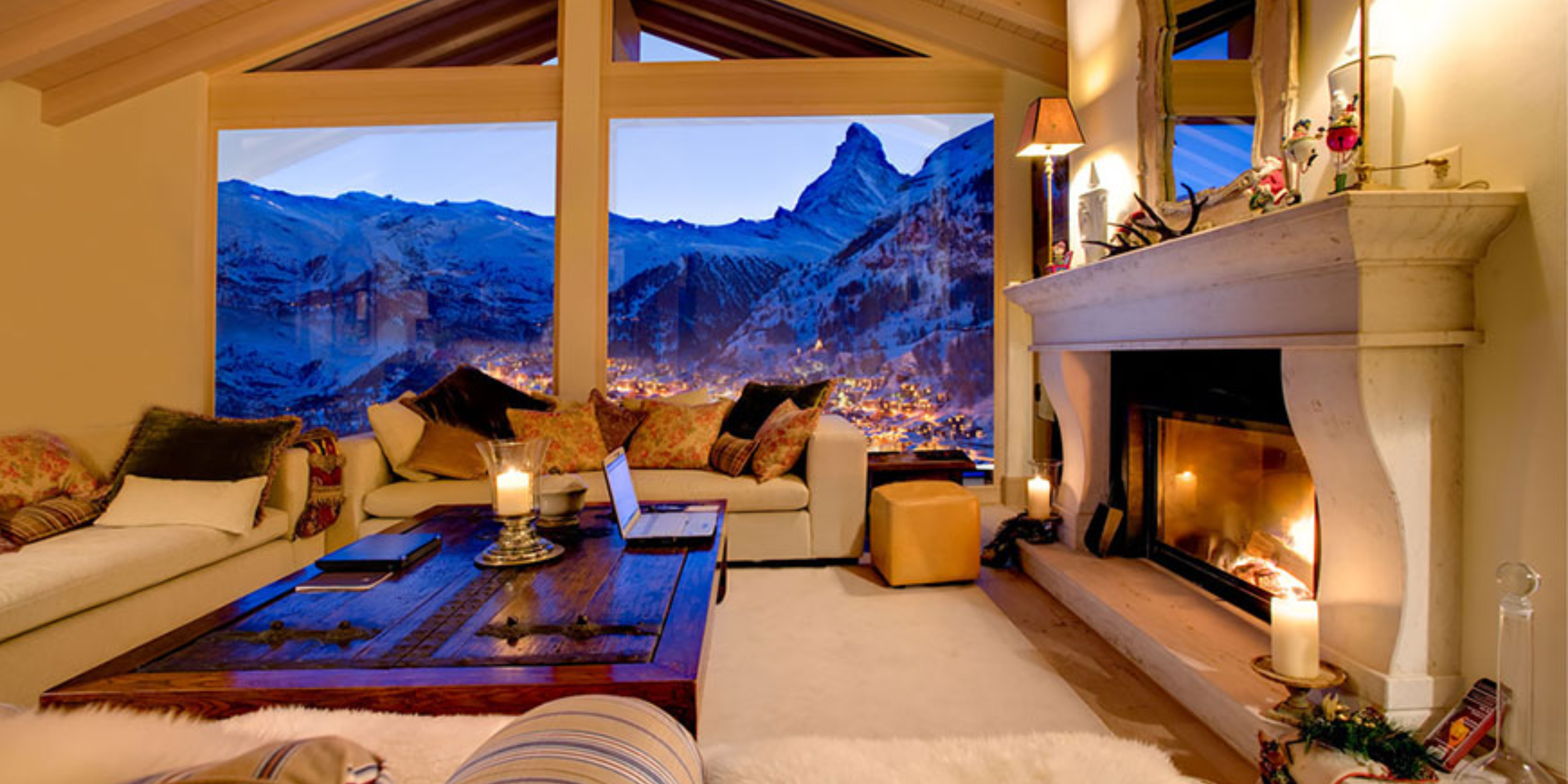“Have you heard that Portugal is home to Europe’s Route 66” enquired Susana Cardoso when Travel Times met the dynamic director of the Portuguese Tourist Board in Ireland during Holiday World, our premier consumer travel event .
“Anyone who enjoys slow travel, discovering beautiful off the beaten track places and the real Portugal will enjoy our route 66”, she explained. “Portugal offers much more than Lisbon which is city, Porto and the Algarve where most tourists come”.
Rising to her challenge to take ‘the road less travelled’ spanning 739 km down the country’s spine, from the far north close to the Spanish border to Faro and the Algarve’s southernmost beaches, Travel Times got behind the wheel for six days to discover and experience Portugal’s answer to Route 66.
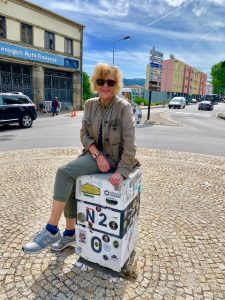
The N2 – Estrada Nacional (national Road 2) marked by elderly milestones and sporadic road signs, passes through many diverse landscapes, showcasing the country’s fantastic regional foods and wines along the way. It is the longest continuous road in Portugal, indeed one of only three in the world linking a country end to end.
Our journey takes us across the river valleys of the famous port and wine producing Douro, later the Mondego, Tejo and Zezerre, climbing mountains where our rental car Renault’s GPS falls silent and negotiating the narrowest of village cobbled laneways. Monumental gracious baroque cities like Lamego and Viseu are among the overnight stop-offs, eventually reaching the Algarve via a long downhill zig zag of corkscrew bends.
As an incentive to encourage more exploration, the N2 road trip comes with a yellow passport and a pocket guide, available from tourist information offices for stamping – similar to Camino walks passports – along the way. We collect ours at the start point in the tranquil city of Chaves across a hillside from the border with Spain. Chaves is home to famous hot springs and dates back to Roman times with its impressive Roman bridge, charming artisanal shops and Termas & Spa, a sprawling high tech wellness and treatment complex.
Lamego, the main town in the southern Douro valley and one of the oldest in the country, is spectacularly perched almost 1,000 m high, its numerous vineyards spilling down into valleys below. We break our journey for the night on the outskirts at Hotel Lamego (www.lamegohotel.pt). It’s a good choice – attractive with a quirky modern design and sweeping views over vineyards as far as the eye can see. A selection of self- service Douro wines hang from bottle dispensers in the bar and cost €2,50 for a large glass. Generous tapas average €6,50 each.
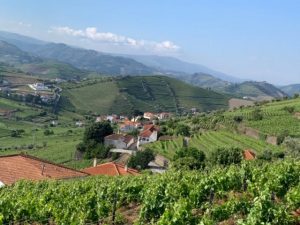
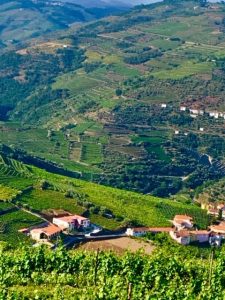
The splendour of the Douro river and centuries of port production here make a side visit to Regua ,at the heart of the river and full of tasting cellars and a Douro museum, worthwhile.
From there we retrace a torturous bendy part of the N2 back to Lamego and onwards to Viseu, an elegant small metropolis full of baroque architecture, famous for exciting gastronomy. Pousadas are Portugal’s showpiece accommodation when it comes to atmosphere. Some are located in abandoned castles and palaces, others in former convents and monasteries.
Pousada de Viseu, towering over the old town closed its doors as a hospital in the 1990s. Today sympathetically re-designed as a luxury hotel it’s one of Portugal’s leading Pousada addresses .A wander through old town brings us to museum Grao Vasco, home of Portuguese primitive painting, next to the impressive cathedral. Muralha da Se Restaurant next door to the museum is a true find – fantastic inexpensive regional cooking, whose soups start from €2,50, main courses averaging €14-€15 washed down inexpensive heavenly Dao wines.
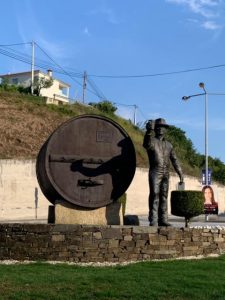
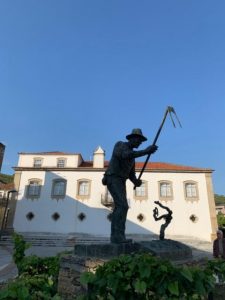
Portugal’s Alentejo region is best known for vineyards and outstanding beaches along its coastline. Venture beyond cork oak forests and sleepy hamlets inland around world heritage city Evora, and you’ll meet gentle hills, speckled with significant megalithic monuments. The best preserved stone circle, or cromlech on the Iberian Peninsula, Cromeleque dos Almendres is reached by a dusty track from beautiful Imani Country House, a mixture of rustic charm and sophistication, serving farm to table produce and hidden away amid orange groves providing shade for its old carved stone swimming pool.
Driving south towards Abrantes on the Tagus, the landscape becomes flatter. Land not cultivated for winemaking is given up to olives, fruit orchards and cork plantations. Abrantes is an industrial heartland – a rarity on this Portuguese Route 66 tour – it’s factories giving much needed employment. Luna hotel Turismo de Abrantes restaurant commands the city’s best views over the Tagus river far below, features local specialities of wild boar and local lamb.
Blackened skeletal forests are a memory of devastatingly frequent forest fires the further south we travel. Pousada Faro in the steep village of Estoi above Faro is a pink and peach former palace that looks a bit like Hearst Castle in California, a mix of baroque and ancient Rome with lovely formal gardens and follies.
Faro where we spend our last day deserves far more than a quick run through. Sadly, too many tourists by-pass Faro in their race to the sunbeds of the Algarve’s often built up coastal resorts. The old city’s mosaic paved pedestrianized streets are full of atmosphere and we check out a great restaurant and pavement terrace up behind the old fort Tertulia Algarvia (www.tertulia-algarvia.pt) . It specializes in slow cooking (watch out! Portions are enormous and two can easily share one main course) and holds culinary workshops. We also explore the colourful aromatic covered market and check out brilliant street art, recording the lives of the fishing families of Olhao whose many sardine and mackerel canneries except for one “Manna” are gone.
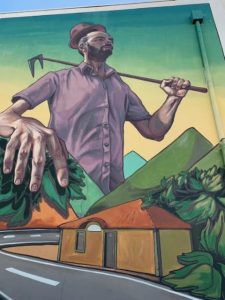
Like Jack Kerouac’s epic jaunt over the asphalt, Thelma and Louise’s adventures or Route 66, immortalized in books, music and movies this exploration of Portugal’s highways and byways has not been without the odd mishap. We lose our way more times than I dare to admit, despite the GPS which often reverts to the Portuguese language for reasons we fail to grasp.
To travel Portugal’s Route 66, diversions included, is to glimpse the authentic heart and soul of one of Europe’s most historic, oldest and friendliest of lands.
Within sight of Faro airport, we near the end of our journey, now far from the asphalt. The Faro guide Diana Nunes delivers us to the wetlands of eco rich Ria Formosa, home to a wealth of protected bird and marine species. “Let someone else do the driving here”, she laughs as we jump aboard the motorized flat bottomed boat.
For information on Portugal’s ‘Route 66’ and other road trips see www.visitportugal.com Portuguese National Tourist office, Dublin 01-6316309. For Faro food and wine, cultural and unusual tours around the Algarve go to www.pt4u.pt Isabel flew to Porto with Ryan Air (www.ryanair.com) ex Dublin, returning Ryan Air from Faro to Cork. Ryan Air also flies to Faro from Dublin, Kerry, Knock and Shannon. Isabel stayed at two leading pousadas, historic buildings found throughout Portugal Pousada de Viseu and Pousada Palacio Estoi (www.pousadas.pt). Accommodation included boutique hotels Luna Hotel Turismo (www.lunahoteis.com) doubles from €68 with breakfast in Abrantes, Lamego Hotel (www.lamegohotel.pt)doubles from €90;and Imani Country House (www.imani.pt) from €140 with breakfast for two, near Evora . In Chaves close to the thermal waters, Hotel Premium(www.premiumchaves.com) from €48. Unlock the world’s hidden treasures with our ultimate travel guide to “Portugal’s Route 66” – your comprehensive source for all the best sights, sounds, and experiences!



